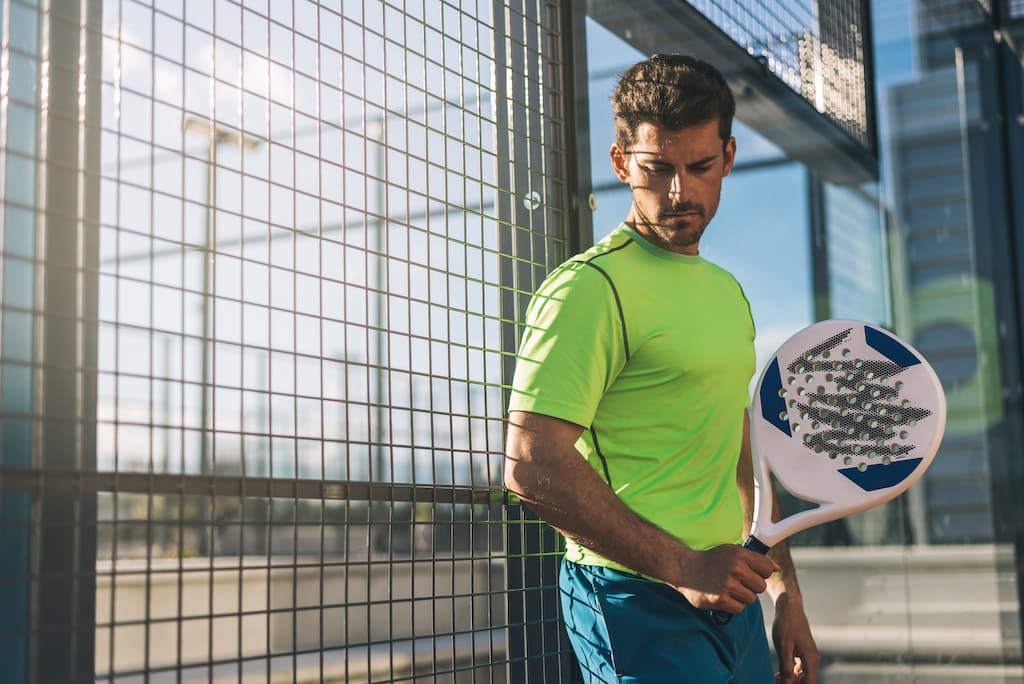Padel originated in Mexico in the mid-20th century when Enrique Corcuera, a Mexican businessman, developed the sport on his property. It was initially played on an open court but later evolved to include enclosed courts with walls, which is now the standard format. The sport gained popularity in Mexico and was introduced to Spain in the 1970s. Spain played a crucial role in popularizing Padel in Europe and beyond.
Padel is a racket sport that combines elements of tennis and squash and is typically played on an enclosed court about a third of the size of a tennis court. It is a fast-paced, easy-to-learn game that has gained popularity recently, particularly in Europe and Latin America. Padel is played in doubles, and the players use solid paddles to hit a pressurized ball over a net, aiming to score points by getting the ball to land within the opposing team’s court.
It has increased in popularity, attracting both recreational players and professional athletes. It represents a significant cultural and sporting phenomenon in many countries. Today, Padel is widely played in Spain, Argentina, Mexico, and many other countries, with a growing presence in countries like the United States, the United Kingdom, and Australia. Its rapid expansion and unique blend of tennis and squash elements make it an intriguing and enjoyable sport for people worldwide.
The Padel Court Explained & Dimensions
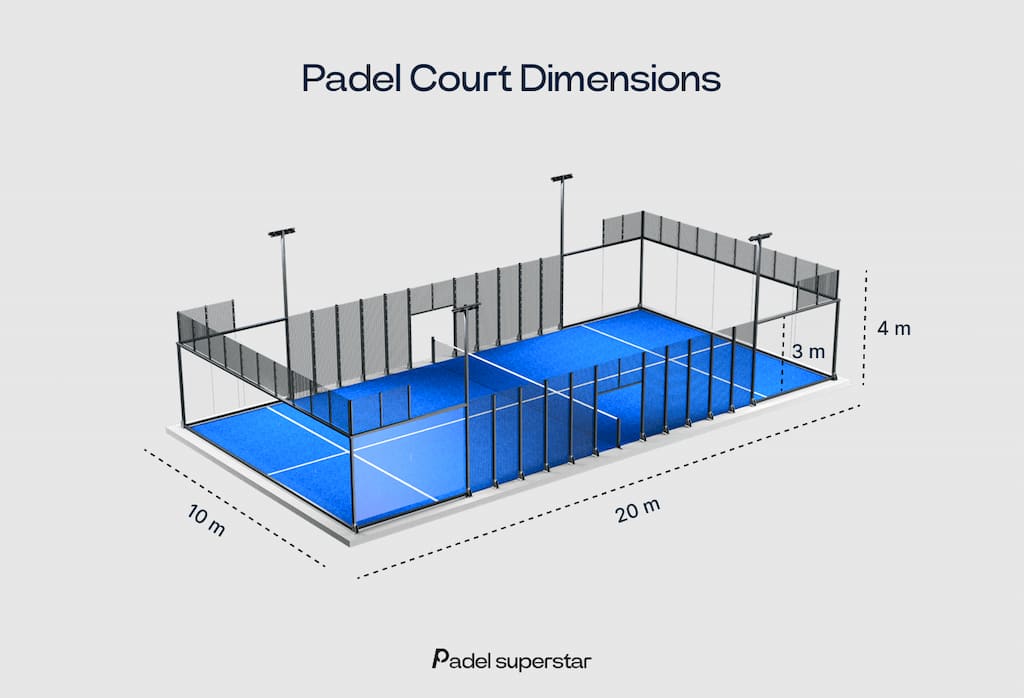
What is the Size of a Padel Court?
A padel court, also known as a padel court or a padel court, has distinct dimensions and characteristics that set it apart from a traditional tennis court.
A standard padel court is smaller than a tennis court. It measures 20 meters in length and 10 meters in width. This compact size makes Padel suitable for urban areas with limited space.
The playing surface of a padel court is usually made of artificial turf, similar to that used in many artificial grass sports fields. It provides good traction and consistency for gameplay.
A padel court has a net that is 88 centimeters in height at the center and 92 centimeters at the sides. It is placed at the midpoint of the court, dividing it into two halves.
One of the defining features of a padel court is its enclosed playing area. The court is surrounded by glass or transparent walls on all sides, including the back.
These walls are typically made of tempered glass, which allows players and spectators to see the action while providing safety and preventing the ball from leaving the court.
How Does The Padel Court Differ From a Tennis Court?
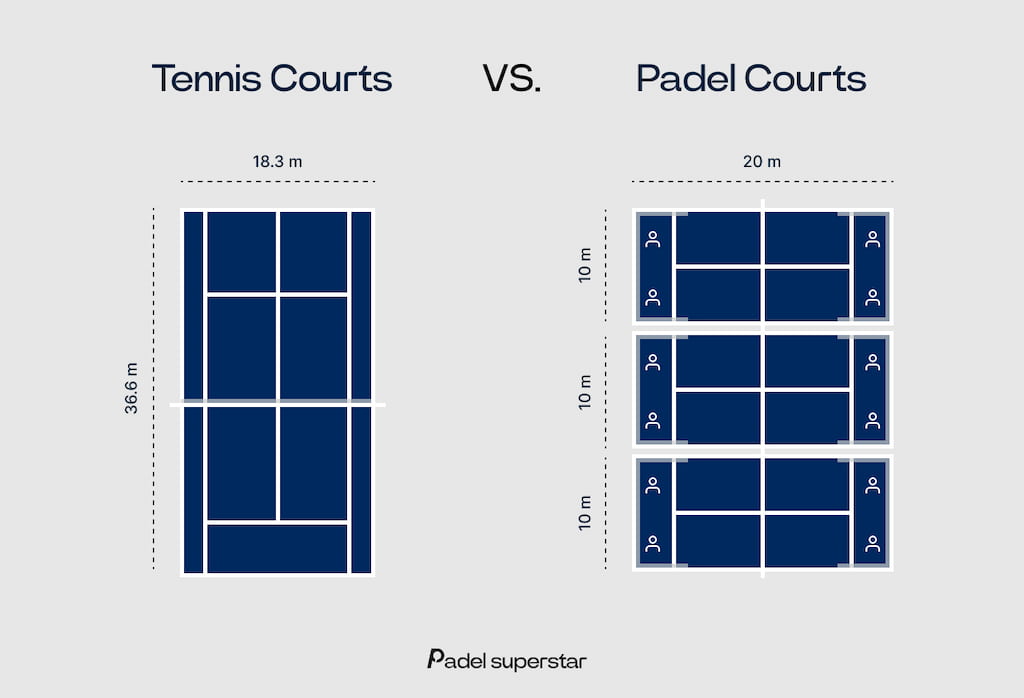
As was already established, tennis significantly influences Padel, and anyone who watches a game of Padel cannot help but note how much it resembles a tennis match.
There are some variances, mainly because Padel is played inside. You’ll note the differences listed below as well.
- Court Size: The most significant difference is the size. A standard tennis court is much larger, measuring 23.77 meters in length, 8.23 meters in width for singles play, and 10.97 meters wide for doubles play. Padel courts are substantially smaller and more compact.
- Enclosed Walls: Padel courts are surrounded by walls, while tennis courts have open sides. The walls in Padel are a fundamental part of the game, as players can use them to play off and incorporate them into their strategies.
- Scoring: Scoring in Padel is similar to tennis, except for a “let” rule. Unlike tennis, where a lot is replayed, a let does not stop the point in Padel. Play continues, which helps maintain the game’s fast pace.
- Service Rules: The service rules in Padel are different from tennis. In Padel, the server must start the serve with an underhand swing, and the ball must hit the ground before reaching the net and then bounce into the receiver’s service box.
Padel Racket & Ball
Like other racket sports, Padel involves specific equipment, including the padel racket and ball. Here’s a look at the equipment used in Padel and how the Padel racket differs from a tennis racket:
Padel Racket
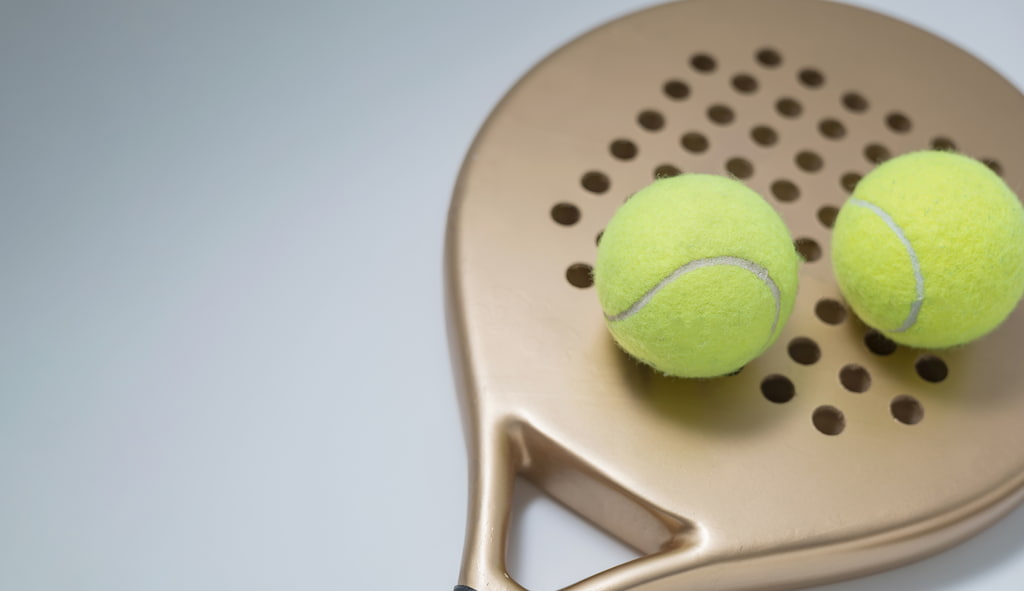
Padel rackets, or paddles, are uniform in size, measuring up to 45.5 cm (18 inches) in length and 26 cm (10 inches) in width. Unlike tennis rackets, they have a consistent shape.
Padel rackets use composite materials like carbon fiber or fiberglass for durability, enabling spin and speed. They are lighter, weighing between 330-385 grams (11.6-13.6 ounces), crucial for agility in close-net play. Its surface includes designed holes, reducing air resistance and enhancing spin control.
Padel Ball
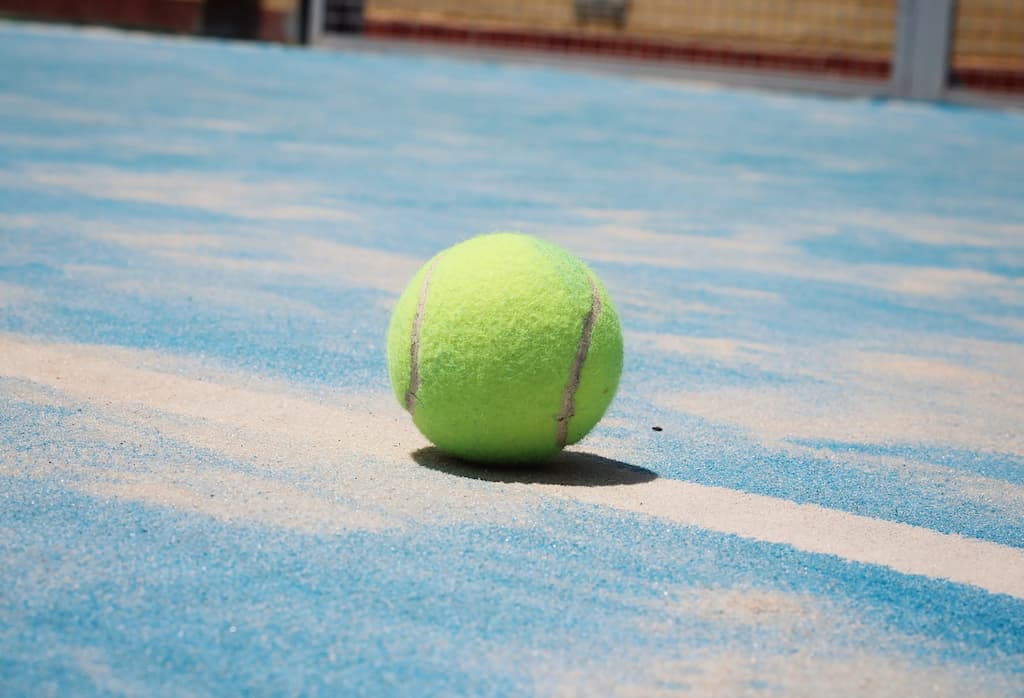
Padel balls are more petite and less pressurized compared to tennis balls. They have a diameter of 6.35 to 6.77 centimeters (2.5 to 2.67 inches). The reduced size makes them more suitable for the smaller padel court.
Padel balls are made of rubber and have a thicker, less pressurized core than tennis balls. This gives them a slower pace and lower bounce, which is ideal for Padel’s close-net gameplay.
Scoring & Winning
Scoring in padel shares similarities with tennis but has key distinctions:
- Padel is played in a best-of-three-sets format, with a set won at six games. A tiebreaker decides a set at 6-6.
- Game scores use “0,” “15,” “30,” and “40,” akin to tennis. A team needs two consecutive points from “deuce” to win.
- Sets require a 2-game margin; if tied at 6-6, a tiebreaker determines the set winner.
- Winning the match necessitates taking the majority of sets in a best-of-three format.
What is the Difference Between Padel and Tennis?
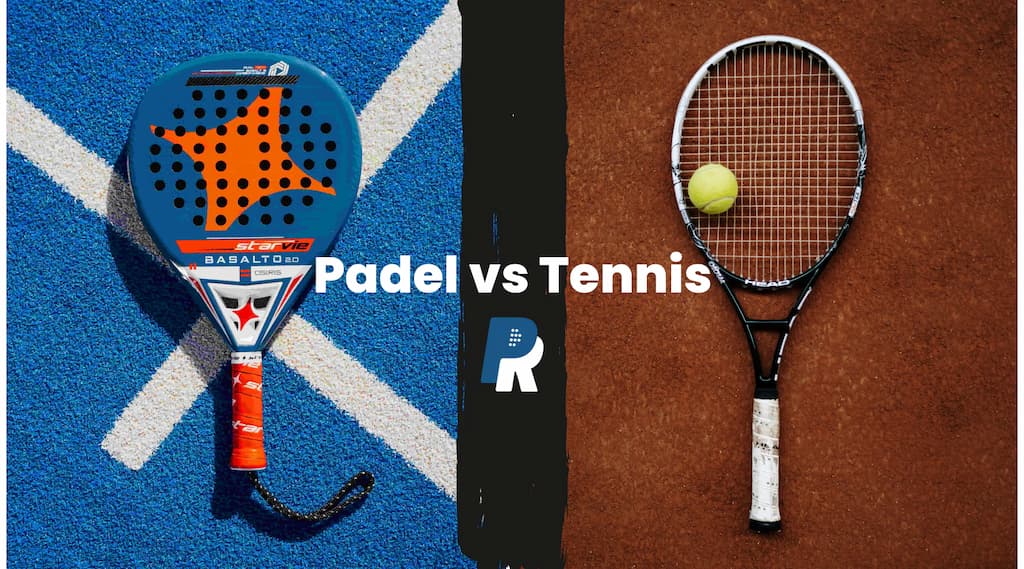
Padel and tennis are both racket sports but have some notable differences. First, padel courts are significantly smaller than tennis courts, making them more urban-friendly. Padel courts are enclosed with walls on all sides, allowing for some exciting wall play, a feature you won’t find in tennis. While the scoring system in Padel is somewhat similar to tennis, there are some unique rules:
- There is no “let” rule in Padel; a serve hitting the net and landing in the service box continues to play.
- Padel lacks the “advantage-in” rule; the first point after “deuce” wins.
- Tiebreakers differ slightly in scoring, with Padel requiring 7 points with a 2-point margin.
These rules maintain a lively, unique dynamic suited to Padel’s court and gameplay. And let’s not forget the equipment – padel rackets are solid, perforated, smaller, and lighter compared to tennis rackets, and the balls are smaller and less pressurized.
Transferable Skills Between Tennis and Padel
There are some handy skills like racket skills. If you’re a tennis player, your hand-eye coordination, ball-striking abilities, and racket control can translate nicely to Padel. Your movement and footwork on the court are also transferable – agility and quick positioning are valuable in both sports.
Serving experience from tennis can come in handy in Padel, even though the serve technique is different. And understanding court positioning, teamwork, and shot selection can be applied to both games.
Why Do They Call it Padel?
The name “padel” for the sport is believed to have originated from the Spanish language. It’s commonly thought to be derived from the Spanish word paddler,” which means to play or hit with a racket or paddle.
This term aptly describes the central action of the sport, where players use solid paddles to hit the ball over the net. Despite its Mexican origin, the word “padel” has since become the internationally recognized name for the sport.
What is Padel called in America?
While “padel” is the most commonly used term, it’s worth noting that some people may refer to it as “paddle tennis” or “paddle” for simplicity. However, it’s important to distinguish between “paddle tennis” and “padel,” as they are two distinct sports with different rules and equipment. “Paddle tennis” is a separate sport played on a smaller court with solid paddles and a depressurized tennis ball.
Padels Near You
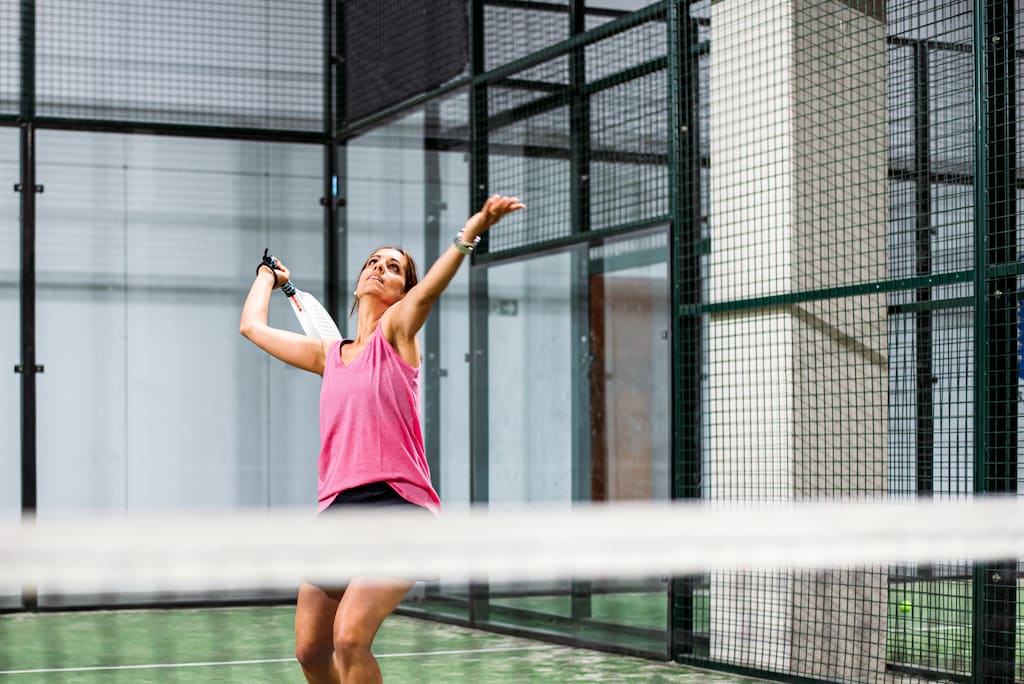
To locate nearby padel courts, start with an online search using search engines, map services, or specialized sports facility directories. You can also inquire at local sports clubs, fitness centers, and tennis facilities. Engaging in padel-related social media groups and forums can provide recommendations, and don’t hesitate to ask local players or enthusiasts for insights.
Choosing a Padel Court
When selecting a padel court, prioritize location for convenience. Examine the court’s quality, ensuring well-maintained surfaces, walls, and nets. Adequate lighting is essential for evening play. Consider the availability of an online booking system and facilities like changing rooms and restrooms. Be mindful of pricing, including rental equipment costs. Check for a vibrant padel community, which can offer more playing opportunities and social connections. Use trial sessions or introductory lessons to assess the court’s suitability. Lastly, gather feedback from local players for valuable insights into the court’s atmosphere and management.
Conclusion
If you’re eager to delve into the exciting world of Padel, there are some key considerations and next steps to keep in mind. Connecting with the local padel community is essential to truly immerse yourself in the sport. Join social media groups, forums, or clubs to stay informed about events, leagues, and opportunities to meet fellow enthusiasts. Ensure you have the necessary equipment. Practice regularly to improve, and consider joining local leagues or tournaments for competitive play.

